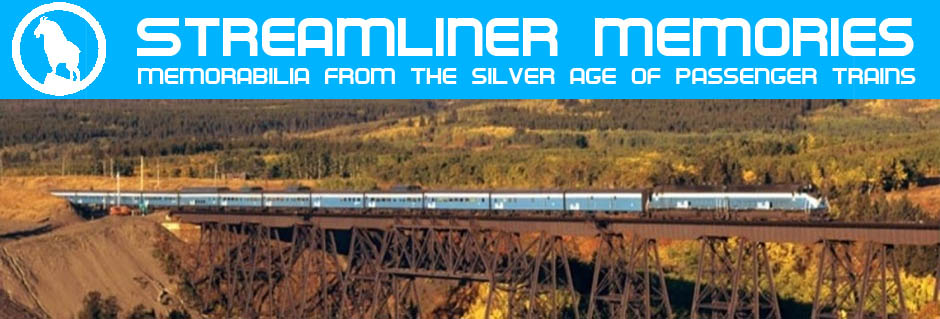In 1954 through 1956, Kudner commissioned several artists addition to Bern Hill and Ralph Brillhart to paint GM locomotives to use for Railway Age covers. I’ll present as many as I can from either Greg Palumbo’s collection or from Google scans. Google scanned some issues only in black-and-white, and I’ll skip those but provide links to the issues.
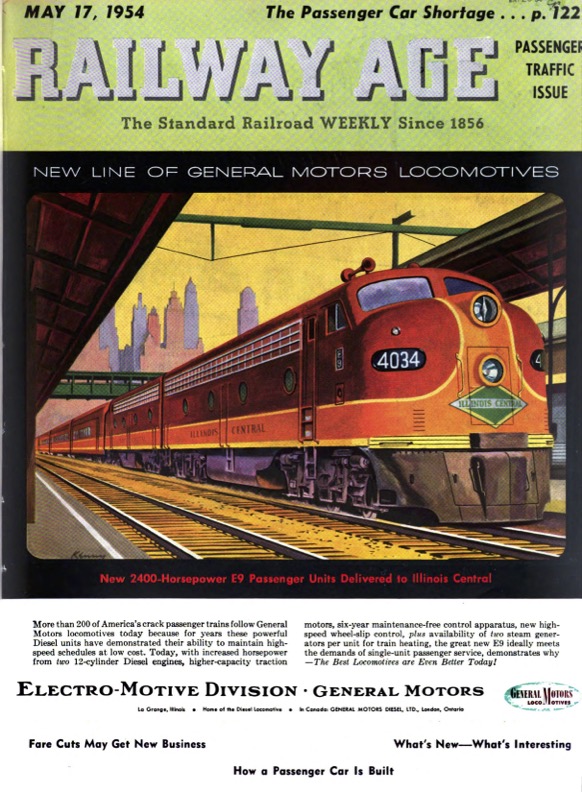 Click image to download a 1.9-MB PDF of this magazine cover.
Click image to download a 1.9-MB PDF of this magazine cover.
This Illinois Central passenger train led by an E-9 locomotive was painted by someone named Kenny. That may refer to John Kenny, who co-founded the New York City High School of Art and Design. He also worked as an architect for the New York Central. However, John Kenny was principally known as a ceramist so this may have been painted by a different Kenny.
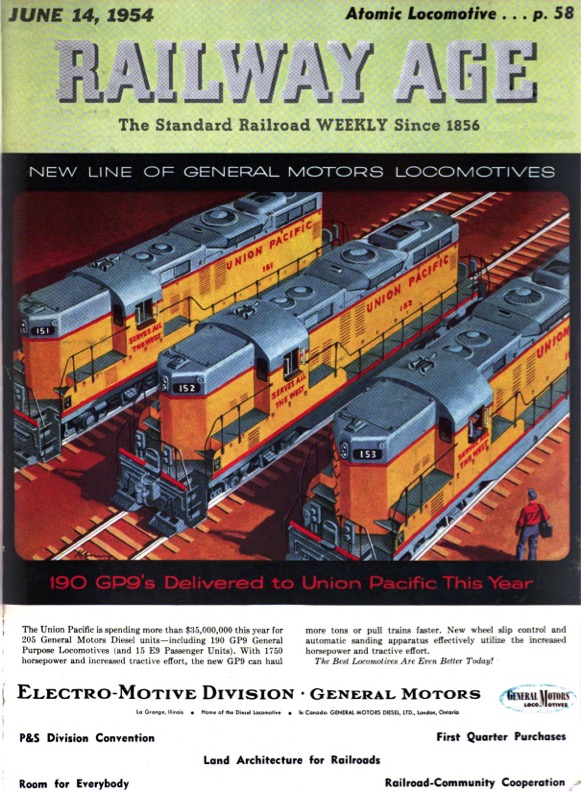 Click image to download a 2.1-MB PDF of this magazine cover.
Click image to download a 2.1-MB PDF of this magazine cover.
Here’s another cover signed Kenny. We can see that one feature both have in common is the gravel ballast is barely noticeable while some other artists seem to draw each rock individually.
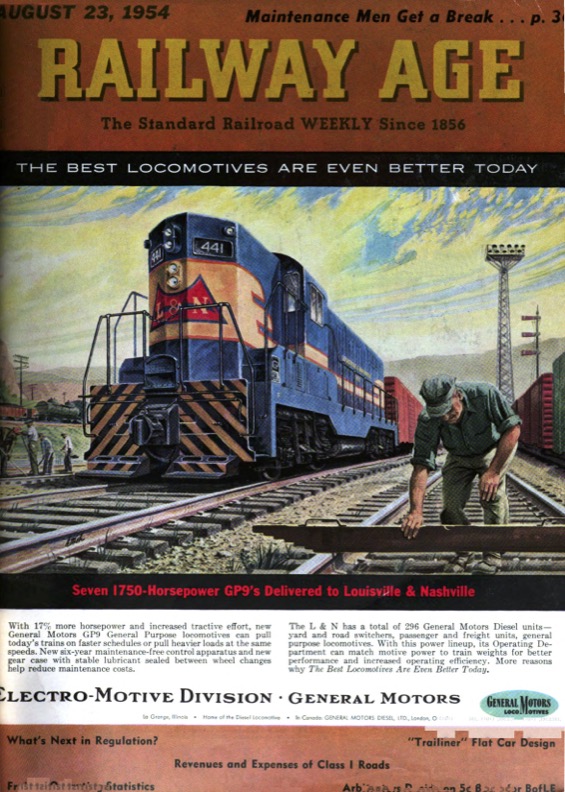 Click image to download a 2.0-MB PDF of this magazine cover.
Click image to download a 2.0-MB PDF of this magazine cover.
This painting appears to be signed “Ettich” on one of the rails. I haven’t found any information about a commercial artist by that name, so perhaps I am reading it wrong.
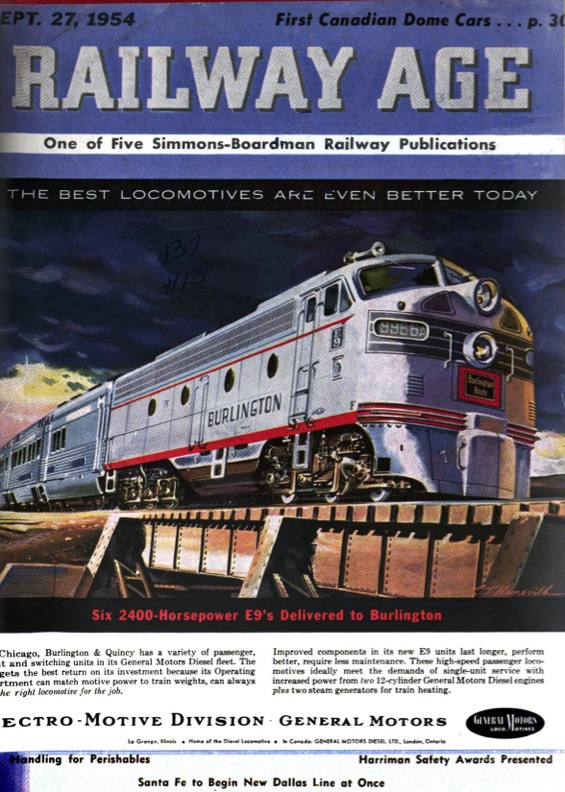 Click image to download a 1.9-MB PDF of this magazine cover.
Click image to download a 1.9-MB PDF of this magazine cover.
This painting is signed R.T. Handville, referring to Robert Tompkins Handville (1924-1993). Handville was born in New Jersey and studied art at the Pratt Institute in Brooklyn. He illustrated magazines and designed a postage stamp honoring the National Park Service.
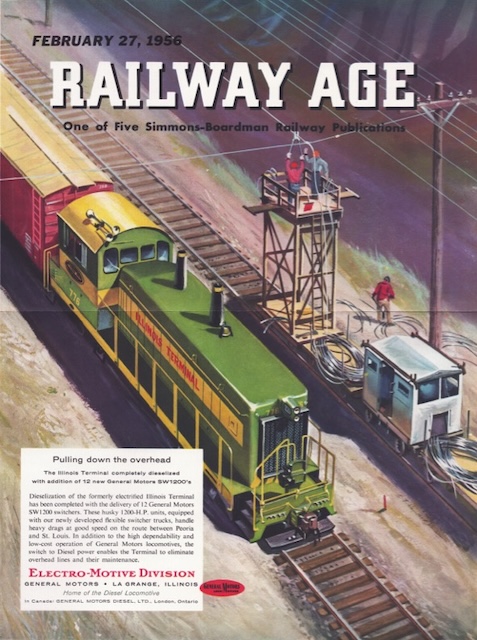 Click image to download a 2.7-MB PDF of this magazine cover. Click here to download an 11.3-MB higher-resolution PDF of this image from Greg Palumbo’s collection.
Click image to download a 2.7-MB PDF of this magazine cover. Click here to download an 11.3-MB higher-resolution PDF of this image from Greg Palumbo’s collection.
Handville’s signature is barely visible in the dirt to the left of the flatcar on the right side of this picture.
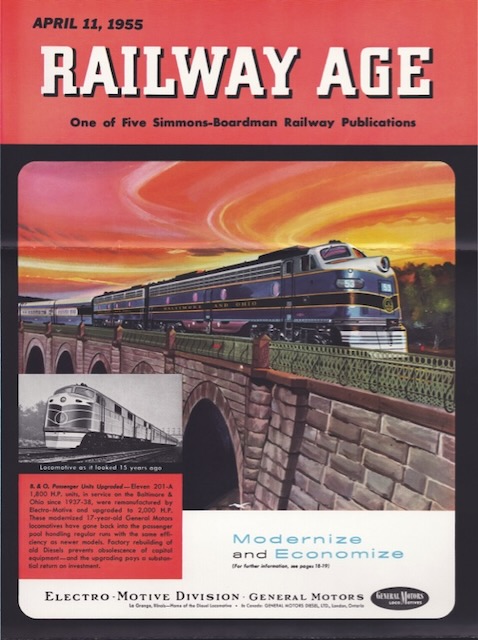 Click image to download a 1.8-MB PDF of this magazine cover. Click here to download a 7.5-MB higher-resolution PDF of this image from Greg Palumbo’s collection.
Click image to download a 1.8-MB PDF of this magazine cover. Click here to download a 7.5-MB higher-resolution PDF of this image from Greg Palumbo’s collection.
Here’s a beautiful painting of a B&O train, possibly the Capital Limited, crossing the 1832 Thomas Viaduct, one of the world’s oldest railroad bridges still in use today.
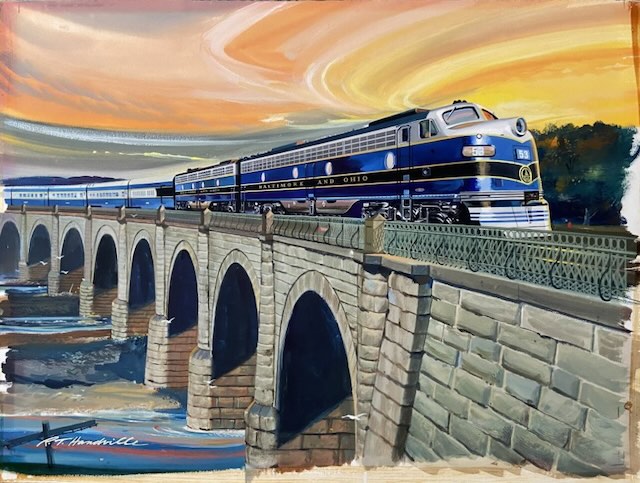
Click image for a larger view.
No signature is visible on the magazine cover, but Greg Palumbo provided this image of the original painting, which is signed R.T. Handville.
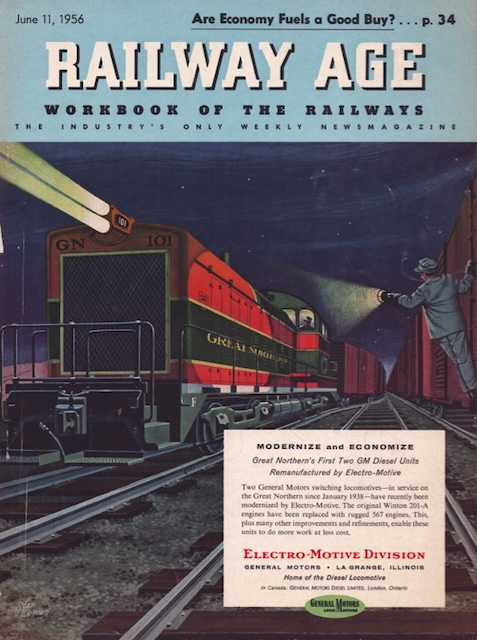 Click image to download a 2.0-MB PDF of this magazine cover. Click here to download a 8.6-MB higher-resolution PDF of this image from Greg Palumbo’s collection.
Click image to download a 2.0-MB PDF of this magazine cover. Click here to download a 8.6-MB higher-resolution PDF of this image from Greg Palumbo’s collection.
This painting is signed Stan Ekman. Stanley Ekman (1913-1998) was born in Chicago and studied art at the Art Institute. One of his early commissions was to design the logo for American Airlines that is still in use today with modest modifications. He also did illustrations for the Saturday Evening Post and other magazines. In addition to this painting, Ekman painted the 1955 Christmas cover, which showed Santa Claus standing on a caboose platform next to the Aerotrain.
Another artist from the Kudner era who should be mentioned is Herb Mott, a well-known illustrator of men’s adventure magazines who also did 52 covers for Railroad magazine. The only cover he did for General Motors was of some Milwaukee Road locomotives for the January 24, 1955 issue of Railway Age.
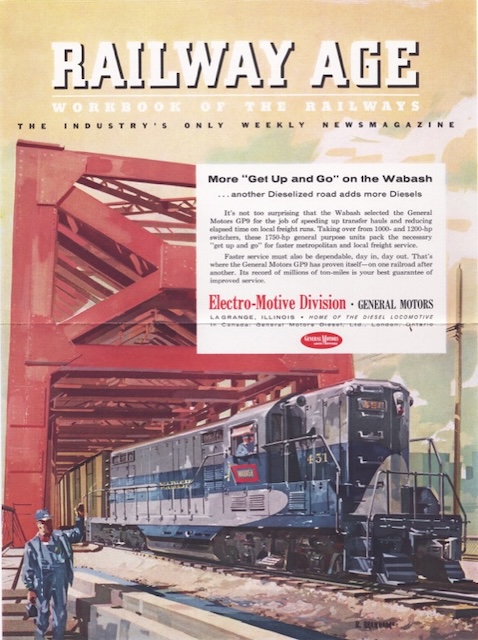 Click image to download a 2.5-MB PDF of this magazine cover. Click here to download a 10.4-MB higher-resolution PDF of this image from Greg Palumbo’s collection.
Click image to download a 2.5-MB PDF of this magazine cover. Click here to download a 10.4-MB higher-resolution PDF of this image from Greg Palumbo’s collection.
After Kudner lost the EMD account to Marstell, an artist named Robert Branham (1926-2013) illustrated several covers. Born in Louisville, Branham studied at the Art Academy of Cincinnati, then worked as an architectural illustrator, including work for both the Vatican and Playboy magazine. In the 1960s, he moved to southern California and did art and graphic design for numerous movies ranging from Guess Who’s Coming to Dinner to Ghostbusters.
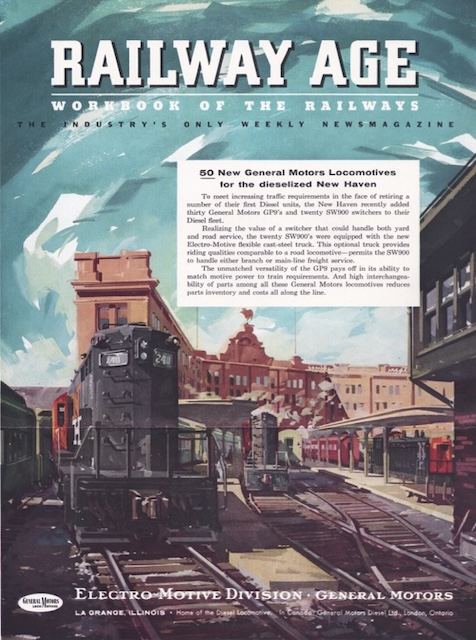 Click image to download a 2.5-MB PDF of this magazine cover. Click here to download a 10.3-MB higher-resolution PDF of this image from Greg Palumbo’s collection.
Click image to download a 2.5-MB PDF of this magazine cover. Click here to download a 10.3-MB higher-resolution PDF of this image from Greg Palumbo’s collection.
His paintings of GM locomotives are alive with movement. In some ways they foreshadowed the works of Tom Fawell, who would become Marstell’s favored artist for locomotive paintings in the 1960s.
